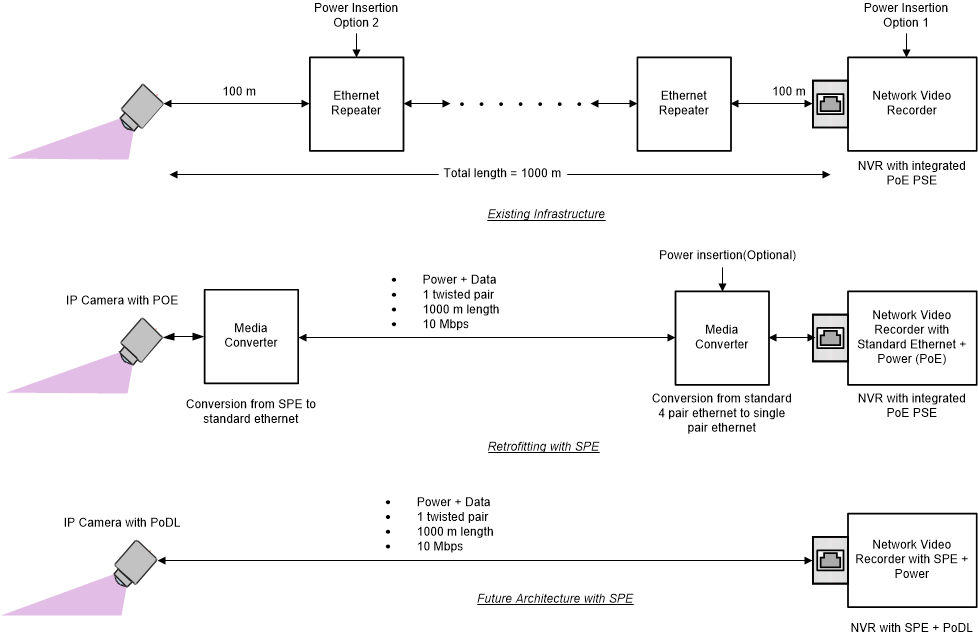SNLA360 October 2020 DP83TD510E
Video Surveillance Applications
Outdoor Internet Protocol (IP) network cameras are often installed at the perimeter of buildings to ensure the continuous capture of video and to generate alarms when security is breached quickly enough to give security officers sufficient time to react. The distance from these cameras to a network video recorder could be 1 km or more, and bridging this distance with standard Ethernet involves repeaters or the use of fiber cabling. With efficient encoding systems like H.264 and H.265, the data-rate requirement drops to under 10 Mbps, even with 4-MP sensors that have a 30-fps rate, see IP Network Camera Connectivity.
Future IP camera products are expected to support SPE, which will facilitate easier installations, as will network video recorders offering a power-sourcing equipment port. Classes 8 and 9 (48-V regulated power-sourcing equipment) or Classes 14 and 15 (50- to 58-V maximum) could support the required power levels for an IP camera, which might need as much as 52 W of power to operate. This power would be sufficient for most camera systems, even those with built-in heaters. For buildings that need upgrades, an intermediate solution would be to use standard Ethernet-to-SPE converters.
 IP Network Camera Connectivity.
IP Network Camera Connectivity.